News & Issues June 2018
Will the blue wave reach here?
In crowded primary ballots, Democrats line up to challenge Faso, Stefanik
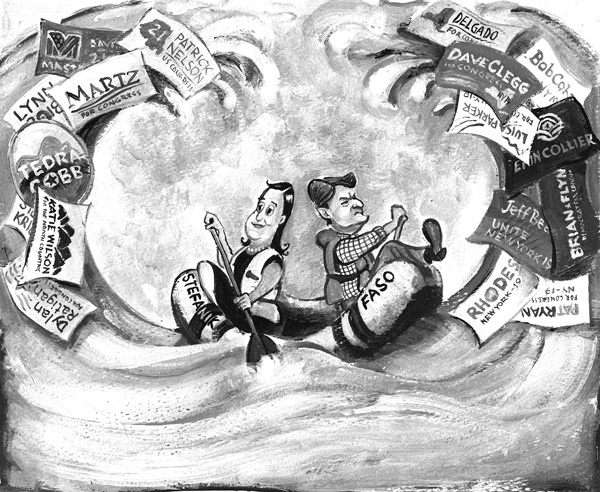
By EVAN LAWRENCE
Contributing writer
With control of the U.S. House of Representatives at stake, Democratic voters will go to the polls this month to choose their challengers to two Republicans who now represent much of eastern New York.
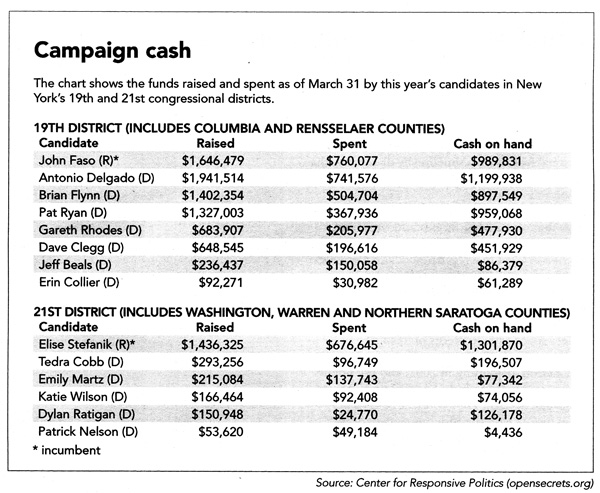
Political observers say the crowded primary ballots in New York’s 19th and 21st congressional districts are a sign of Democratic enthusiasm and outrage that has been on display in a series of special elections around the country since Donald Trump won the presidency.
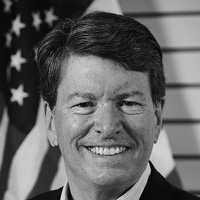 But the choices made by Democratic voters in the June 26 primary could determine whether the two area districts – now represented by Republicans John Faso and Elise Stefanik – could really be in play in November.
But the choices made by Democratic voters in the June 26 primary could determine whether the two area districts – now represented by Republicans John Faso and Elise Stefanik – could really be in play in November.
In the 19th district, comprising 11 counties from Rensselaer and Columbia west and south to the Pennsylvania border, voters will choose among an unprecedented seven Democratic candidates.
In the 21st district, which stretches from Washington and northern Saratoga counties to the Canadian border and west to Lake Ontario, five active candidates will be on the ballot. The crowded primary in the 21st is all the more remarkable given that the district lately has been considered by many political experts to be safely Republican.
Such big primary fields are unusual, but “having so many candidates means the seat has value to the Democratic Party,” explained Richard Born, a political science professor at Vassar College.
19th district: Moderate tradition
In the 19th district, Faso won his first term in 2016 to replace retiring Republican Chris Gibson, whom Born called “one of the top five moderate Republicans in the House.”
Faso is a mainstream conservative Republican – a former minority leader of the state Assembly who was his party’s standard-bearer for governor in 2006 -- in a district where voter enrollment tilts slight more toward Democrats (32.5 percent) than Republicans (31.3 percent). Unaffiliated voters make up 26.6 percent of the electorate. The Independence Party, which usually supports Republican candidates, is the largest of the minor parties, with 6.1 percent, giving conservative voters a slight edge.
Although Gibson won re-election handily in the district twice after it was redrawn in 2012, and Faso won by a comfortable eight-point margin in 2016, the 19th “is one of the most competitive districts in the U.S.,” said Gerald Benjamin, a political science professor at the State University of New York at New Paltz.
“Faso knows he has a fight on his hands,” Benjamin said. “He’s working very hard at it.”
Seven Democrats are running for the chance to go up against Faso: Jeff Beals, Dave Clegg, Gareth Rhodes and Pat Ryan of Ulster County; Erin Collier of Otsego County, the lone woman in the field; Antonio Delgado of Dutchess County; and Brian Flynn of Greene County.
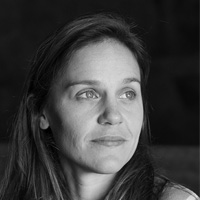 None of the seven has held elective office, although several have worked in government. Beals, a teacher, was an officer in the CIA and worked for the State Department in the Middle East. Collier, who has a master’s degree in agricultural economics, worked for the United Nations, U.S. Agency for International Development and the Obama administration.
None of the seven has held elective office, although several have worked in government. Beals, a teacher, was an officer in the CIA and worked for the State Department in the Middle East. Collier, who has a master’s degree in agricultural economics, worked for the United Nations, U.S. Agency for International Development and the Obama administration.
Rhodes has worked in state government in the Cuomo administration. Clegg and Delgado are lawyers. Ryan, a graduate of West Point, did two tours of duty in Iraq as an Army Intelligence officer. Flynn and Ryan are small business owners. And Flynn, the only candidate who had been endorsed by a labor union (the Transport Workers Union of America) as of late May, has the distinction of having a unionized campaign staff.
 Delgado has working-class African-American and Hispanic roots – he grew up in Schenectady, where his parents worked for General Electric -- and he’s been endorsed by the Congressional Black Caucus and the Congressional Hispanic Caucus Bold PAC, among other progressive groups. He was a hip-hop performer and ran a music production company in California from 2005-09, and he earned a master’s degree at Oxford and law degree at Harvard. In 2011, he married a law-school classmate who was from Ulster County, and the couple settled in Rhinebeck.
Delgado has working-class African-American and Hispanic roots – he grew up in Schenectady, where his parents worked for General Electric -- and he’s been endorsed by the Congressional Black Caucus and the Congressional Hispanic Caucus Bold PAC, among other progressive groups. He was a hip-hop performer and ran a music production company in California from 2005-09, and he earned a master’s degree at Oxford and law degree at Harvard. In 2011, he married a law-school classmate who was from Ulster County, and the couple settled in Rhinebeck.
Flynn and Ryan have been endorsed by anti-gun-violence groups – Flynn by the organization Moms Demand Action for Gun Sense in America, and Ryan by the Pride Fund to End Gun Violence.
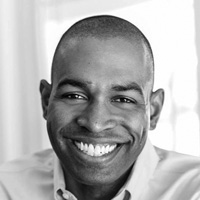
Expensive race ahead
As of the end of the most recent financial reporting period on March 31, Delgado, Flynn and Ryan had raised the most money for their campaigns, at $1.9 million, $1.4 million, and $1.3 million respectively. Faso had raised $1.6 million. The total raised by all of the 19th Congressional District candidates as of that date was nearly $8 million, by far the highest of any district in New York.
“The general rule of thumb is that the challenger needs to raise more money to overcome the incumbent’s name recognition,” Benjamin said.
Although he has served only one term in Congress, Faso was already well known from his 15 years as a state assemblyman and two unsuccessful bids for statewide office.
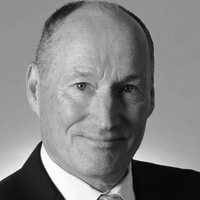
“One of the Democrats’ weaknesses is that none of the candidates is well known,” Born said. “The issue differences are relatively minor. All of the leaders are quite liberal. Where they end up money-wise could make the difference. More important is what voters don’t like about Faso. It’s a toss-up race.”
In May, Ryan’s campaign released results of a private poll pairing the front-runner Democrats with Faso. The poll showed Ryan ahead of Faso, 44 percent to 41 percent. Delgado was tied with Faso, at 42 percent each.
But Ryan’s lead over Faso was within the poll’s range of error, Benjamin noted, making the spread statistically insignificant. No public polls have been conducted in the district.
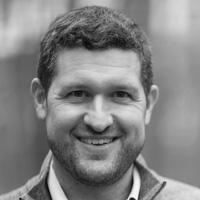 “Faso hasn’t begun his campaign yet,” Benjamin said. “Faso in general is extraordinarily informed on the issues. The others have a lack of experience. It won’t be the defining issue, but it will be a factor in the debates. People can learn one or two issues quickly, but they’ll be disadvantaged on a range of issues. Faso’s trying to find issues that resonate with the voters.
“Faso hasn’t begun his campaign yet,” Benjamin said. “Faso in general is extraordinarily informed on the issues. The others have a lack of experience. It won’t be the defining issue, but it will be a factor in the debates. People can learn one or two issues quickly, but they’ll be disadvantaged on a range of issues. Faso’s trying to find issues that resonate with the voters.
Who gets to decide the conversation?”
Avoiding the ‘carpetbagger’ tag
With only fund-raising to judge the strength of a candidate’s support, it’s hard to know who’s ahead, Benjamin said.
“The common thinking around New Paltz is that Ryan is formidable and local,” he said. “The political leaders on the left want him because he’s credible and has a local base, but he’s not so far left as to be problematic for mainstream Democrats such as union members.”
Ryan also grew up in the district and has been living in it for several years.
“He’s not a carpetbagger,” Benjamin said.
The Democratic candidates in 2014 and 2016 – Sean Eldridge and Zephyr Teachout – both were seen as outsiders who took up residence in the district for the sake of their political ambitions.
Although President Trump carried the 19th district by 7 percentage points in 2016, “it’s not a right-wing Republican district,” Born said.
The right Democrat could overcome the Republican tilt by winning Democratic, independent, and moderate Republican votes, he said. Barack Obama carried the district in 2008 and 2012.
To win control of the U.S. House of Representatives, Democrats need a net gain of 23 seats across the nation.
“The bottom line is that this is one of the Democrats’ must-win districts,” Born said.
New York’s northernmost
Republican Elise Stefanik won her first term representing the 21st Congressional District in 2014 after three-term Democrat Bill Owens decided not to run again. She won easily over obscure Democratic candidates in 2014 and 2016.
The sparsely populated district sprawls over 12 mostly rural counties at the north end of the state. The district includes Fort Drum, the state’s largest military base, and has the state’s highest proportion of veterans.
Of the district’s 437,000 registered voters, 40.6 percent are Republican, 29.3 percent are Democratic, and 21.5 percent are unaffiliated. The largest of the minor parties is the Independence Party, with 6.2 percent of the electorate. In addition to having no formal Republican opposition, Stefanik also has the Independence, Conservative and Reform party lines on the November ballot.
The district “tilts Republican but has some strong Democratic pockets,” said Christopher Mann, assistant professor of political science at Skidmore College in Saratoga Springs. Trump carried the district handily in 2016, but Obama carried it in 2008 and 2012.
Five Democrats, down from at least 10 who at one point had declared their intention to run, will compete in the district’s Democratic primary: Tedra Cobb of St. Lawrence County; Emily Martz of Franklin County; Patrick Nelson of Stillwater (Saratoga County); and Dylan Ratigan and Katie Wilson of Essex County.
One other candidate, Don Boyajian of Cambridge (Washington County), made it onto the congressional ballot and also had raised the most money among the Democratic contenders -- $493,000 -- as of March 31. But Boyajian dropped out in May, saying he would run instead to represent the 107th Assembly District in Albany. He now aims to challenge Republican Jake Ashby, who narrowly won a special election for the seat in April.
Of the five remaining Democratic congressional candidates, only Cobb has held elective office. She served in the St. Lawrence County Legislature from 2001 to 2009. Cobb now works as a consultant for private businesses, nonprofit organizations, hospitals and universities.
Martz has worked in education, financial services and economic development and most recently served as deputy director of the Adirondack North Country Association, a group that supports sustainable development in a 14-county region of northern New York.
Nelson ran unsuccessfully for the town council in Stillwater and has worked on a number of political campaigns, most notably U.S. Sen. Bernie Sanders’ run for the Democratic presidential nomination in 2016. At 28, Nelson is the youngest of the Democratic contenders, though he is only two years younger than Stefanik was when she won her first term in 2014.
Ratigan has been a broadcast business journalist with his own show on MSNBC, and he founded a business that helps military veterans operate small farms.
Wilson is a single mother who runs a thrift and consignment store in Keene.
Economy and health care
A common theme stressed by all of the Democrats is that the district’s residents have been left behind by the national economic recovery and left out of federal decision-making. Their platforms focus on the North Country economy, health care, and the environment.
Cobb has said she decided to run when Stefanik voted last year for the American Healthcare Act, the Republican’s proposed replacement for the Affordable Care Act, better known as Obamacare. The legislation, which later failed in the Senate, would have cut health-care jobs, forced smaller hospitals in the region to close, and left 83,000 people in the district without health insurance, Cobb says.
Cobb also is the only candidate who addresses the issue of gun violence on her campaign Web site. She says she supports “maintaining an individual’s access to firearms for safe hunting and personal protection,” but she lists eight proposals she supports for tightening gun laws to reduce gun violence, which she calls “an escalating public health crisis.”
Martz’s goal, according to her Web site, is to “create an economic system that works for everyone.”
Nelson’s priorities closely follow themes Sanders stressed in his presidential campaign: Medicare for all, universal higher education, a living wage for everyone, and “immediate and bold action to address human-caused climate change.”
Ratigan casts himself as an outsider and reformer, calling for political and economic changes to improve life for ordinary Americans.
Wilson, the single working mother, believes that “we need people like me in Congress.”
As of March 31, Cobb had raised the most campaign cash of the remaining Democratic candidates, with $293,000; Martz was next, with $215,000. Stefanik, by contrast, had brought in $1.4 million in campaign donations, including $805,000 from political action committees.
Mann, the Skidmore professor, said the district is “potentially competitive.”
“There wouldn’t be as much interest if Elise were seen as invulnerable,” he said.
But he added that Stefanik “is doing everything she can to be re-elected. She hasn’t made any glaring mistakes. She’s stood up to the leadership and is taking care of local issues.”
Mann described her as “a fairly moderate Republican.” And as a woman, “she may not be as subject to the gender divide” that has seen women voters strongly backing Democrats in many recent elections.
Although voters are frustrated by the Trump presidency and the direction of the country, “there’s not a lot of daylight between” the Democratic candidates, Mann said.
“It doesn’t seem to me that this is a campaign where anyone has distinguished himself on a particular issue,” Mann said. “This is the most difficult race to predict that I can think of.”
Born likewise called Stefanik “pretty much a good fit” for the district.
But “no Republican incumbent in New York is really safe,” he added. “A really powerful Democratic tsunami could wash her out of office.”
Melissa Shea, the Washington County Democratic Committee chairwoman, said the 21st district’s county Democratic leaders agreed to refrain from endorsing any candidate in the primary. But she pointed to a number of complaints that have dogged Stefanik.
“The issues that get people the most fired up are always related to health care,” Shea said. “Elise was always promoting the repeal of Obamacare. There was no conversation about its replacement. We desperately need help with health care, and she isn’t doing anything.”
People in the district are also upset with the tax bill congressional Republicans pushed through last year, she said. The bill ends the federal tax deduction for state and local taxes, resulting in higher tax bills for a region like upstate New York that has high property taxes and low wages.
The North Country needs wider broadband access and better transportation to attract businesses and workers, Shea said.
A complaint that cuts across party lines is that Stefanik has shied away from contact with voters, Shea said. Last year, when the health care debate was at its height, Stefanik refused to hold any town-hall-style meetings in the district to hear voters’ concerns.
“Elise is vulnerable because so many people came out of the woodwork” to challenge her, Shea said. “They aren’t party activists. They didn’t have careers in government. They’re just passionate about good government. Every single one of them brings something to the table. Voters will have to make some hard choices.”
Mann said he was unaware of any public polling in the district that would indicate who’s in the lead.
“The biggest factor in beating Stefanik is that whoever wins is someone the Democrats and allies believe can be a winner and the party invests in him or her,” Mann said. “The energy could go out of the district if it looks like Stefanik will win.”
Primaries are hard to predict in part because turnout is usually low, Mann said.
“It’s hard to say who will capture the imagination of the voters,” he added. “The wild card is: Who will turn out? What will the candidates’ organizations do to get voters to the polls?”
Born said Democrats usually win primaries by appealing to voters on the party’s left, who generally are the most active.
“Then they have to moderate their message to appeal to the rest of the voters,” who are more centrist, without betraying what they told the more liberal primary voters.
“It will require some skill,” Born said.
